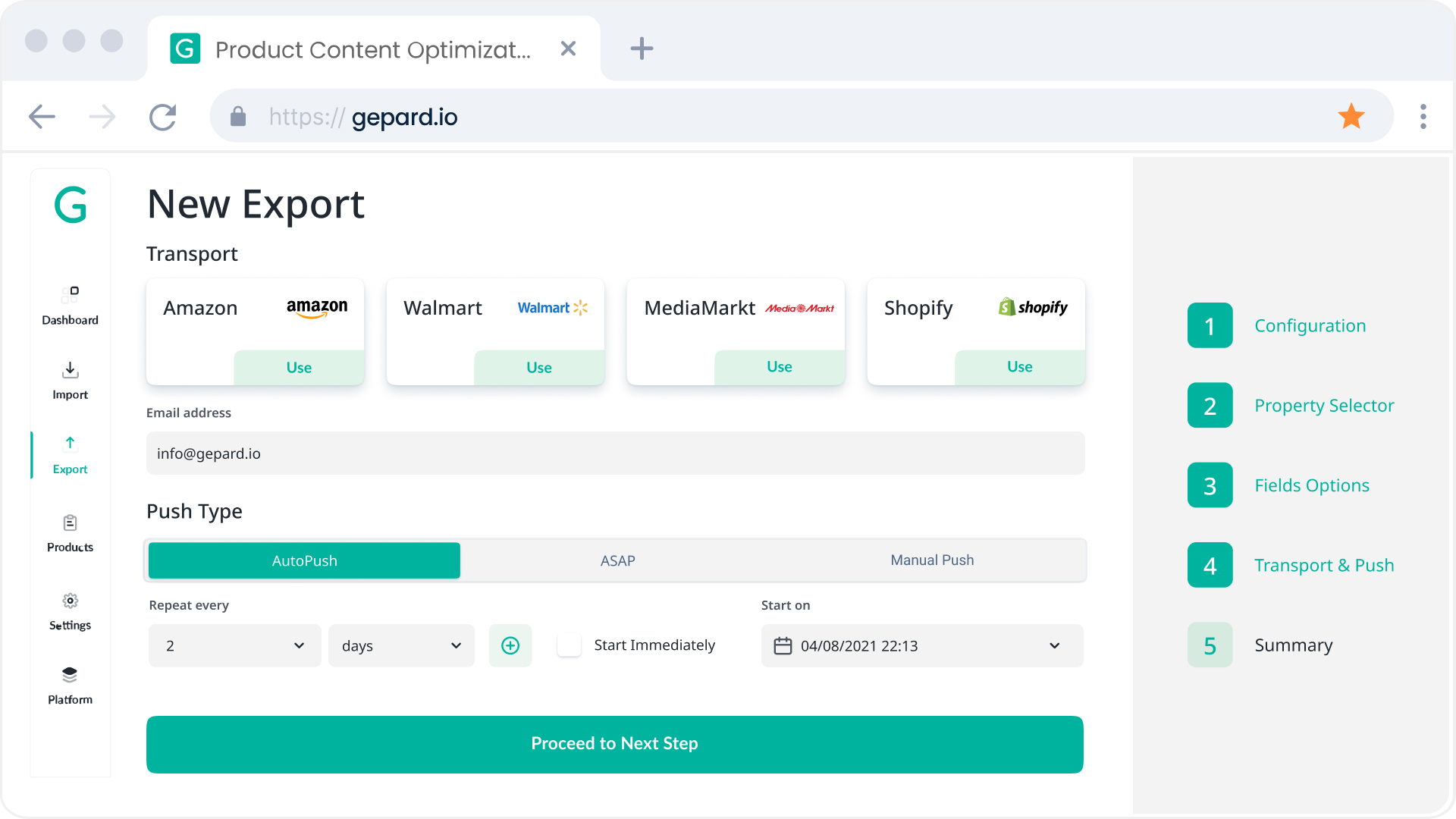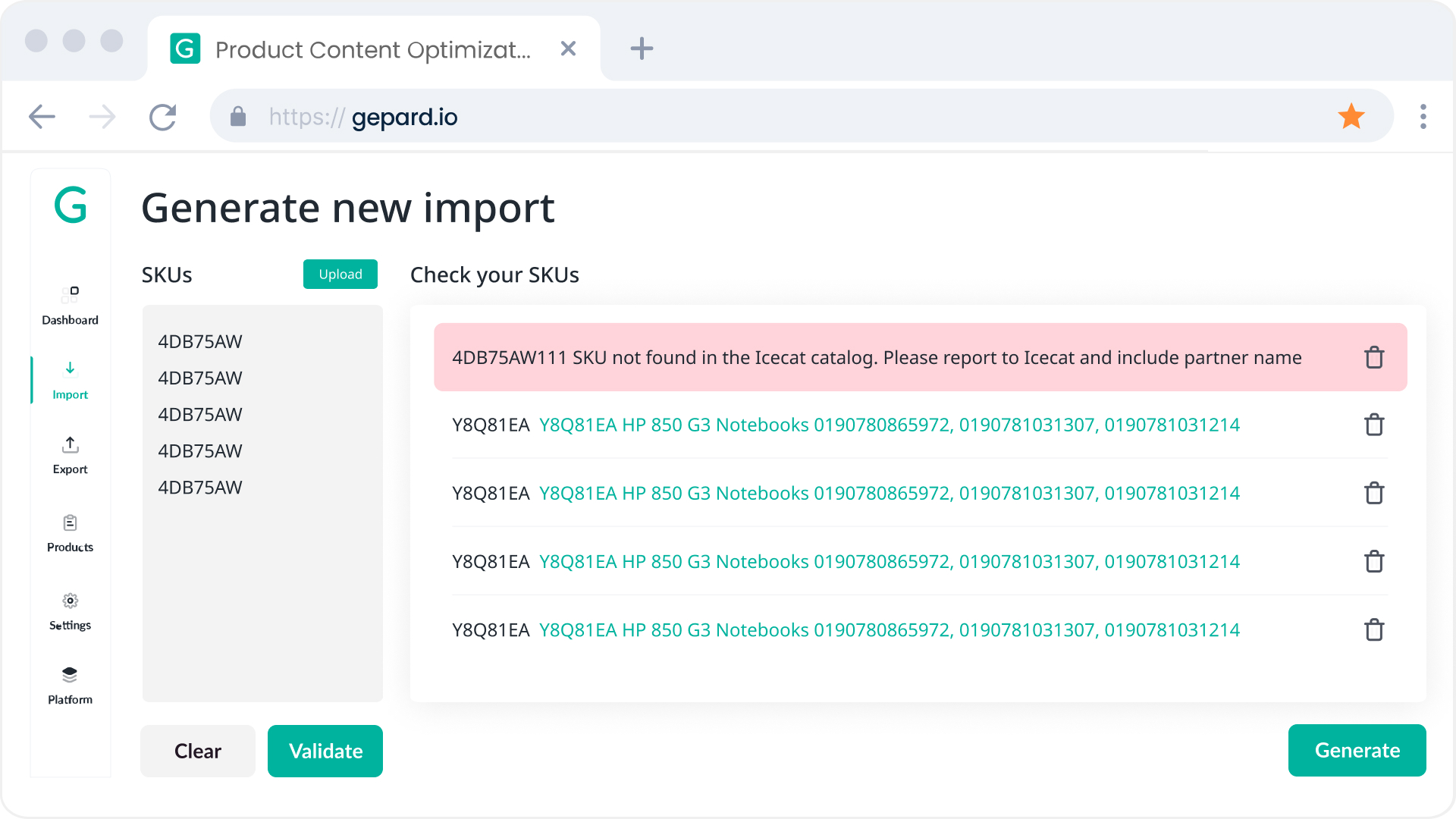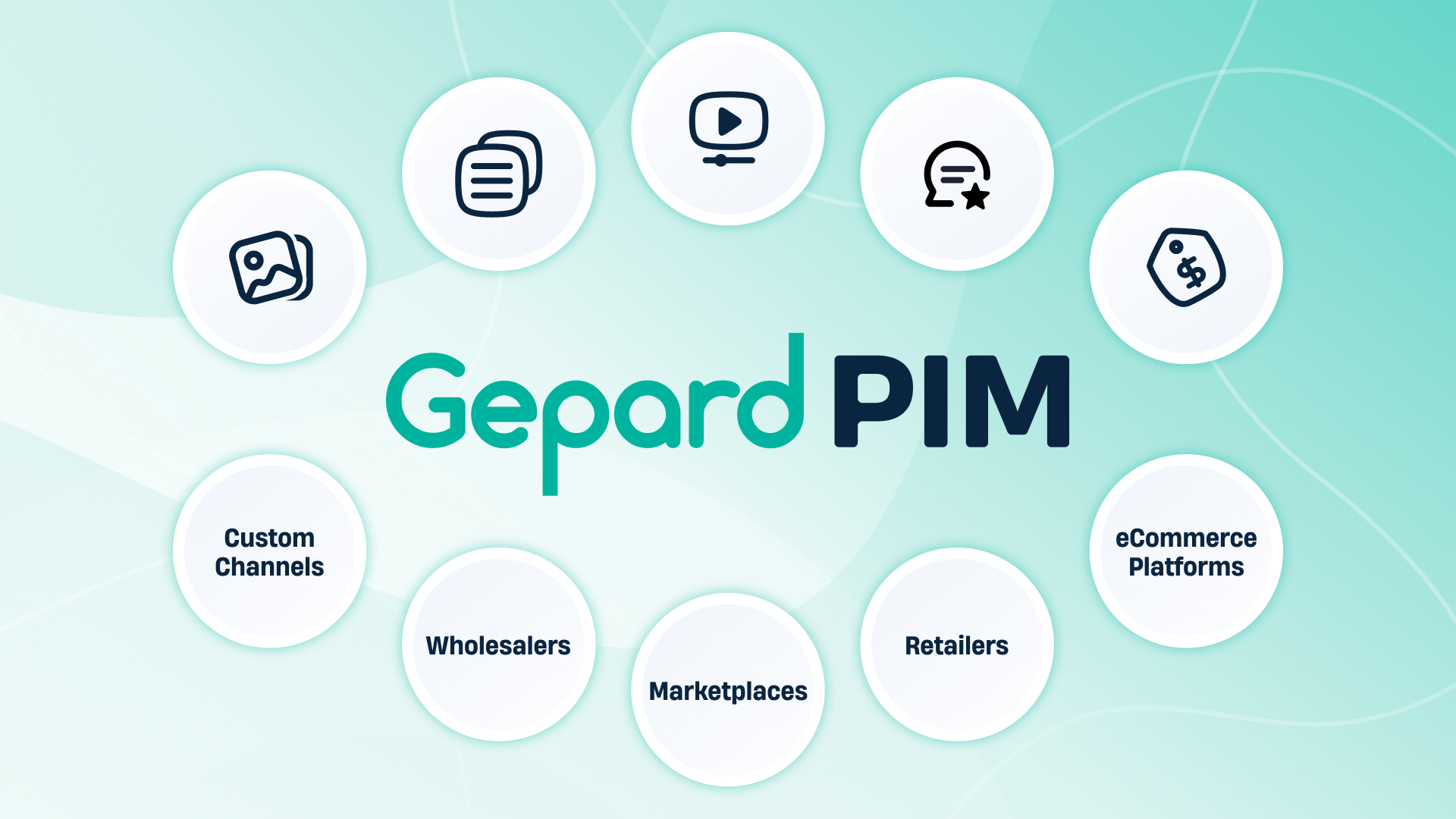How To Manage Product Data Sheets Six Times Faster
Brands and retailers know that producing and managing product information can indeed be a very time-consuming process. Management of product data sheet should include working with titles, descriptions, materials, colors, sizes, various safety, pricing, and other product specification sheets. Both take time to create and keep current. Filling these attributes in product data sheets can add hours of work to a company’s already busy workload.
Creating an efficient product data sheet is among the main goals of a business dedicated to the sale or distribution of products through digital channels. Some companies prefer using Microsoft Excel spreadsheets to handle their product data. These are usually associated with never-ending rows, columns, and often a lot of time, costs, and confusion. Business owners strive to improve their team’s efficiency, save time, and resources, and take advantage of technology to maintain product data sheets.
If you are also looking for alternative and more efficient methods for creating and managing product inventory sheets, keep reading this article.
What Are Product Data Sheets?
The Difference Between Product Data Sheets And Product Spreadsheets
Having your definition of product data sheets straight, it is no less important to also understand how they differ from product spreadsheets. You could notice how the terms can often be used interchangeably, which can be misleading in certain business operations.
A product spreadsheet is a more traditional (read: “a bit out-of-date”) approach to listing product summaries where a lot of items can be specified on a sheet or a single item can be broken down into listed specifics. While spreadsheets are being increasingly considered outdated by many, they are still used for simpler lists and lower-priority storage of tech or business details.
The big downside is that you can only record and process information in sheets manually (i.e., generate summaries, make calculations, update figures, etc.). A product data sheet is a more detailed document dedicated to a single item or service which can be generated automatically (with the right means – read below). On the contrary, spreadsheets require more routine and more manual input, potentially spawning human-factor mistakes.
| Product data sheet | Product Spreadsheet |
 |
 |
Why Excel Isn’t a Database and Can’t Work as PIM (Product Information Management) System
As mentioned above, traditionally many brands store and manage their product data in a Microsoft Excel spreadsheet. Nevertheless, Excel and other similar spreadsheet programs are only great if you need to do simple calculations or sort some small piece of data. When it comes to data sheets of products and a big volume of information, it can take a ton of your precious time. The data might come from various places such as marketing personnel, product management, accounting & inventory systems, and so on. That’s really hard work to do manually.
Furthermore, according to 2022 statistics, 12% of product datasheets contain serious errors, while 90% of product datasheets have product info errors. This may result in poor customer experience and increased returns.
To avoid such a scenario, some companies use product information management and product content syndication software that centralizes diverse product data and delivers complying content to various sales channels.
How to Manage Product Data Sheets Six Times Faster
How to create product data sheets quickly and effortlessly? Dedicated product management tools automate product data processes, eliminate errors, and save time. As a result, your team can collect, add, edit, enrich, and distribute consistent product information fast and easily.
For instance, if you offer products to numerous sales partners that have diverse product data requirements, you would need weeks and months to create product data sheets that meet all the retailers’ requirements.
Today, modern needs have exceeded the capacity for Google Sheets product catalogs. Now, you can benefit from advanced platforms such as Gepard.
Product Data Sheets & Spreadsheets VS PIM Solution
While both classic spreadsheets and more focused product data sheets are common choices for companies across industries, the out-of-date feel of Excel and the complexity of organizing dedicated sheets is fixed with a tech-driven approach. We are talking, of course, about the timely implemented the PIM solution. Why go for it?
Here is a range of tasks you cannot handle when working with traditional sheets or spreadsheets only:
Collect & Update Product Data On-The-Fly
The biggest drawback of both product information management approaches in discussion is the next to no automation of routine processes and tasks. You have to collect and record content manually in spreadsheets, while a complete data sheet will require re-edits if you need to update certain details in it.
In turn, a PIM solution offers content collection automation where a specialized API can be used to integrate directly with as many content sources as you need. E.g., Gepard PIM can easily connect you to a range of content providers, suppliers, manufacturers, marketplaces, retailers, and eCommerce platforms.
Syndicate Product Data To Multiple Channels Automatically
The lack of automation also limits the way you work with data sources and integration channels. You can only publish a very limited amount of content while switching between each separate channel manually and endlessly copying/pasting stuff.
With a PIM in your arsenal, you can automate data push to the webshop via an advanced syndication module. Gepard’s built-in syndication algorithms enable high-level validation of information which guarantees error-free retailer-specific content.

Transform, Validate, And Standardize Product Data Swiftly
Both formats of the content organization are cumbersome to manage when it comes to important info that must be continuously processed (e.g., transformed to fit publication channels, validated to guarantee consistency and quality, and standardized for regular data pushes).
Dedicated PIM tools allow for automated data validation, its on-the-go transformation to the required format, and standardization through in-depth algorithms. Due to all info being syndicated and stored in a single environment where all the necessary tools are available, the processes become swift and cost-efficient.
Get Instant Reports About Your Products
Reports are yet another task to handle manually with data sheets or spreadsheets, requiring lots of time and effort, which results in extra expenses. There is no structured interaction system to make your life easier in this aspect.

A PIM fills this gap, providing the features to generate reports automatically based on the thorough validation of all product info. For example, Gepard’s advanced reporting system not only does that but also fixes missing field types and guides one’s reporting process with system notifications.
Analyze Your Digital Shelf Efficiently
The overall efficiency of digital shelf analysis is hindered dramatically when there is no automated, feature-rich analytics system to tie it all up. No Excel formula can help carry out a high-quality analysis of data in bulk.

A PIM, however, is exactly the solution. Gepard PIM features a full-on digital shelf audit and a range of retail shelf analytics dashboards and tools to better manage content providers and gain valuable insights by monitoring content completeness and geographical coverage.
| Feature or functionality | Product data sheets/spreadsheets | PIM solution |
| Product data management | Manual | Automated, feature-rich |
| Bulk editing | No | Automated |
| Visuals management | Manually added images | Retailer-specific content tools and dashboards |
| Multitenancy | Link sharing | Multiple user roles, dedicated dashboards |
| Managing variations | Manual | Duplicated entries removal, specialized tools |
| Product data localization | Manual | Automated, bulk, language packages available |
| Interface | Traditional, formulas, manual inputs | One-stop solution, feature-rich, dedicated dashboards |
| Mapping product data | Manual | Automated, specialized tools, data import in any format, automated delivery across sales channels |
| Transforming product data | Manual | Automated optimization, dedicated tools |
| Validating data | Manual | Automated, specialized tools, generated reports |
| Standardizing data | Manual | Automated, multiple sources support; ETIM, EPREL, & GDSN standards |
As you can see, an up-to-date, capable system does not leave stale sheets any chances when it comes to overall efficiency and performance. With a good PIM, you get a range of automated opportunities, dedicated tools, and pre-arranged features that not only save time and energy but also additionally drive and boost product data management all around.
Boost Product Data Management With Gepard PIM
Gepard PIM is designed to store and manage product information quickly and efficiently. For instance, if your team makes a change to product data, the new entry will be immediately displayed everywhere the product appears. Having this feature at hand, the team can focus on improving content instead of copy-pasting.

The need to deliver product information that meets the requirements of all the sales partners is another big challenge for most sellers. For example, as a cosmetics manufacturer, you might sell your products to dozens of marketplaces. Each has different online store taxonomy and, therefore, different requirements for product data sheets (different formats of product descriptions, images, and so on). Gepard data syndication tool can help match the client’s master data model with the retailers’ taxonomy. No matter how often retailers change their requirements. With Gepard, updates will be applied to the data sheets fast and easily.
Gepard also cooperated with the world’s top computer manufacturer to reduce manual work for their content department. The client’s sales partners have very diverse requirements for product data sheet template. And it took too much time and effort to fulfill all the requirements and deliver the product spec sheet template to retailers on time.
Please download the case study “How to automate product data sheets delivery” to find out how Gepard resolved the challenge.
Product Sheets Management In 2023
As technology continues to advance and businesses become more data-driven, managing product datasheets efficiently is more critical than ever. In 2023, there are several tools and techniques that can help businesses streamline their product sheet management process and save time and resources.
Automated Data Entry and Verification
One of the most time-consuming aspects of managing product data sheets is entering and verifying data. In 2023, businesses can take advantage of automated data entry and verification tools that can significantly reduce the amount of time spent on these tasks.
These tools use machine learning and natural language processing (NLP) to extract and verify data from product data spec sheets automatically. This means that businesses can create product data sheets faster and with more accuracy, freeing up time for other critical tasks.
Centralized Product Management Systems
Another essential aspect of managing product information sheets is keeping track of all the different versions and updates. In 2023, businesses can use centralized product management systems to store and organize all their product spec sheets in one place.
These systems allow businesses to create a single source of truth for every product data sheet, making it easier to manage updates, track changes, and ensure data accuracy. With a centralized product management system, businesses can avoid duplicate data entry, reduce errors, and improve collaboration between teams.
Free PIM Market Research 2023
Cloud-Based Product Data Sheet Management
In 2023, more businesses will move towards cloud-based data sheet software for managing product information sheets. Cloud-based solutions offer several advantages over traditional on-premise solutions, including:
Scalability. Cloud-based solutions can scale up or down based on the needs of the business, making it easier to handle large volumes of product datasheets.
Accessibility. With cloud-based data sheet software, businesses can access their product data sheets from anywhere, at any time, using any device with an internet connection.
Security. Cloud-based data sheet software often has robust security features and data encryption, which can help businesses keep every product datasheet safe from cyber threats.
Collaborative Product Sheets Management
Finally, in 2023, businesses will continue to focus on collaborative product information sheet management. This means that businesses will encourage collaboration between different teams and departments involved in managing product spec sheets, including product development, marketing, sales, and customer service.
In addition to technical accuracy and completeness, how you present your product data matters just as much. Highlighting benefits clearly, showing what differentiates your product, and supporting your claims with real data can significantly influence buyer decisions. Using an interactive pitch deck tool is a great way to make this information more engaging and persuasive—helping you deliver a memorable, data-backed product story in a visual and dynamic format.
By encouraging collaboration data sheet software, businesses can ensure that all teams have access to the most up-to-date product information sheets, reducing the risk of errors and inconsistencies. Collaborative product data sheet management can also help businesses make better-informed decisions based on the latest product information.
Benefits of Managing Product Spec Sheets With Gepard
Wondering why well-known companies such as Amazon, HP, Dell, Rakuten, Elkjop, Lazada, and many others have chosen to work with Gepard? There are a lot of critical advantages of using a dedicated platform instead of the classic Microsoft Excel or Google spreadsheet. These benefits include (however, are not limited to) the following:
- You always have correct and complete product descriptions.
- Your product specification sheets are always up-to-date.
- Everything is centralized in a single place
- The data sheet software reduces the time required to list new products on your website.
- You have no problems with launching products on time.
- Errorless descriptions result in lower bounce rates, exit rates, and increased conversions.
- You are consistent across various sales channels.
- You will minimize product returns by improving product content.
- You save time and money in the long run.
- Your team can focus on quality content instead of copy-pasting.
- And much more.

Product Sheets Management FAQs
What are technical specifications, and why are they important for product sheets?
Technical specifications are detailed descriptions of a product’s technical features and characteristics. They provide crucial information about a product’s capabilities, performance, and compatibility with other systems or devices. Including technical specifications in product sheets management helps customers make informed buying decisions and allows businesses to differentiate their products from competitors.
What are the key components of a product data sheet template?
The key components of a product data sheet template typically include product specifications, features, and benefits, as well as technical details such as dimensions, materials, and performance metrics. Other important components of the product data sheet template may include pricing information, product images, and customer reviews or testimonials.
How should product specifications be presented in product sheets?
Product specifications should be presented in a clear, organized, and easy-to-read format. They should be labeled and described in simple, concise language that is easy for customers to understand. Visual aids such as tables, graphs, or diagrams can also be used to enhance the presentation of product specifications.
What technical data should contain the product datasheet?
Normally technical data sheets should contain technical data such as product specifications, performance metrics, dimensions, materials, operating conditions, and certifications. Also, the product data sheet should include technical data about the product’s features, benefits, applications, and limitations.
Final Thoughts About Product Sheets Management
If you are a manufacturer, product manager, or retailer, you are most likely facing some difficulties when you need to update pricing and a product catalog. This takes a lot of time and effort, especially when it comes to a large number of products and multichannel sales.
For many companies, Excel has been a traditional choice for product sheets management. However, it might increase the manual work, cause a lot of errors in every product data sheet, and lead to product returns and unsatisfied customers (either it’s B2B or regular shoppers).
Successful businesses have already recognized that utilizing Excel, despite its affordability and ease of use, costs them more in the long run. They understood that having reliable PIM and Syndication software at hand can help them keep all their product content in one place, collaborate with colleagues fast and efficiently, connect new sales channels, and adjust product specification sheets to various marketplaces to boost business growth.


